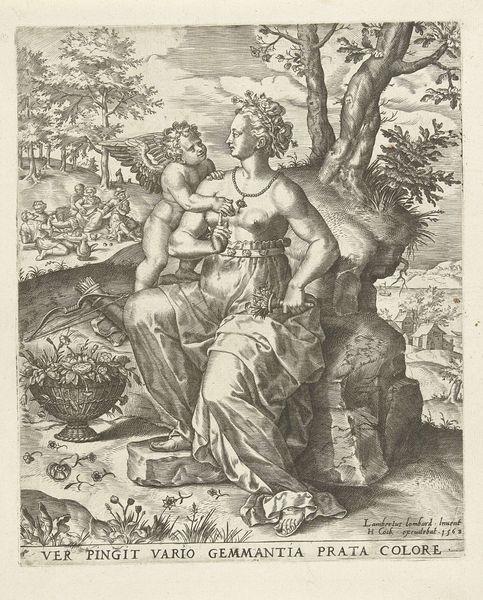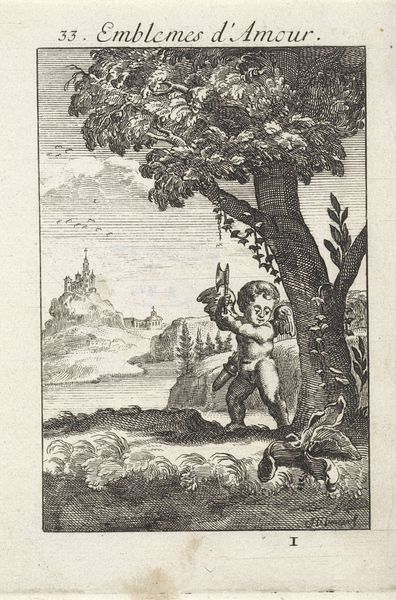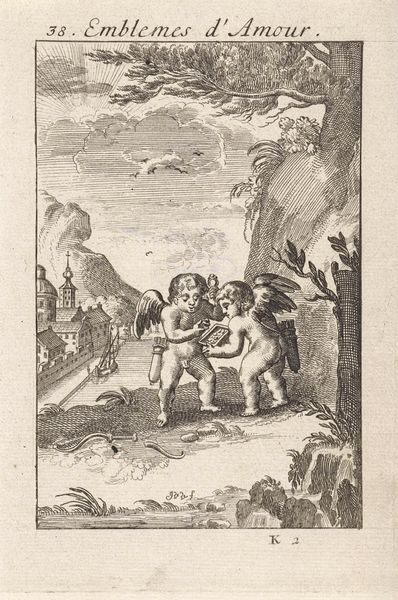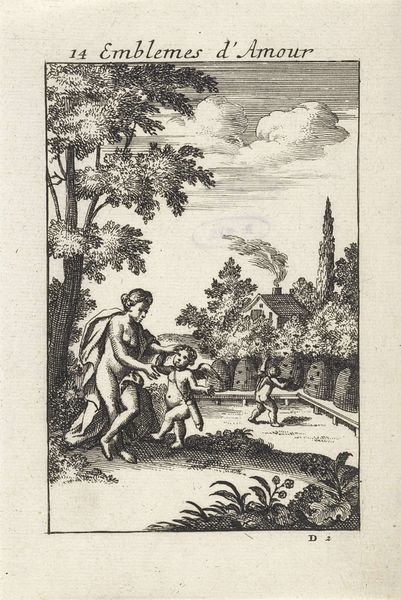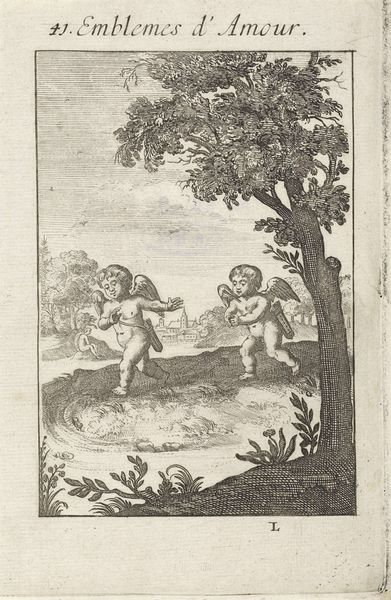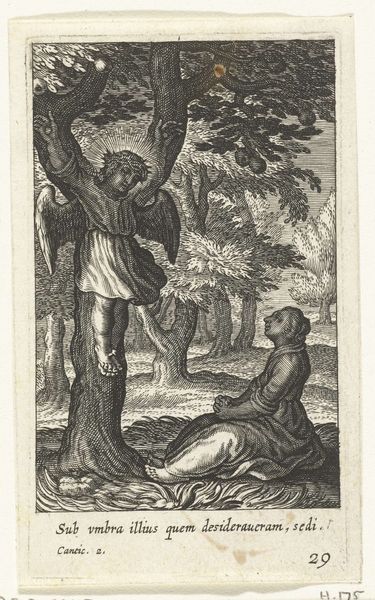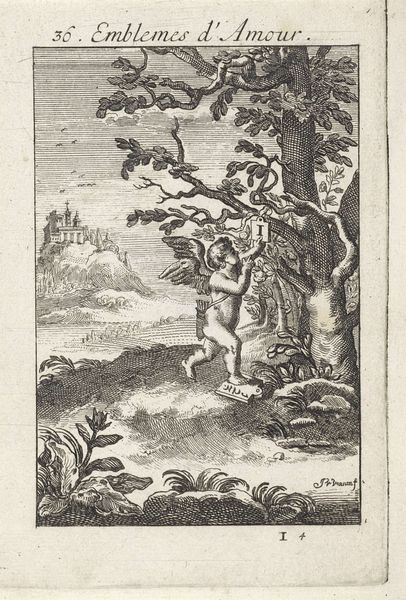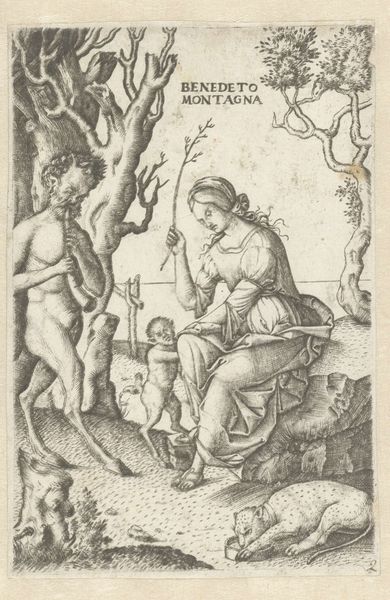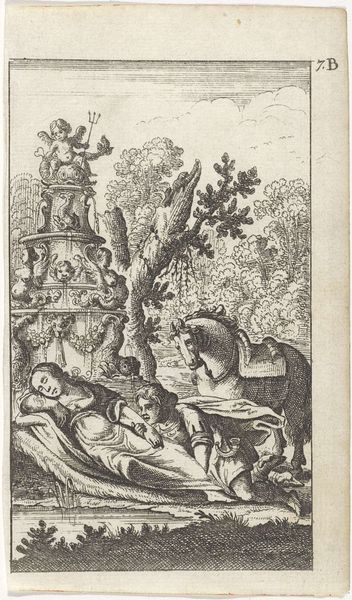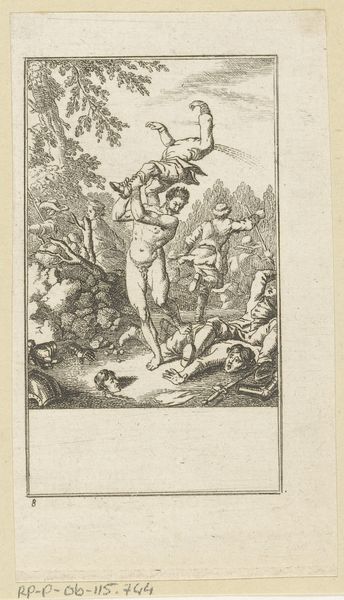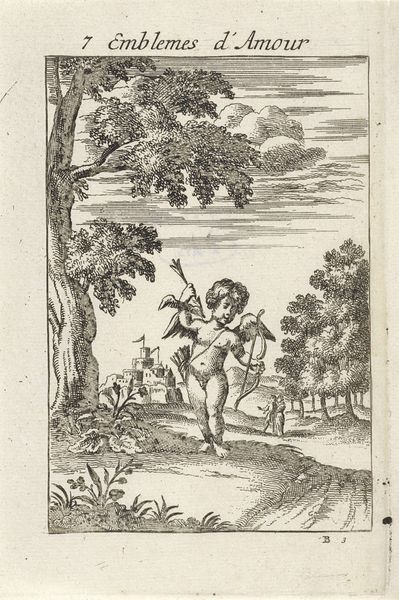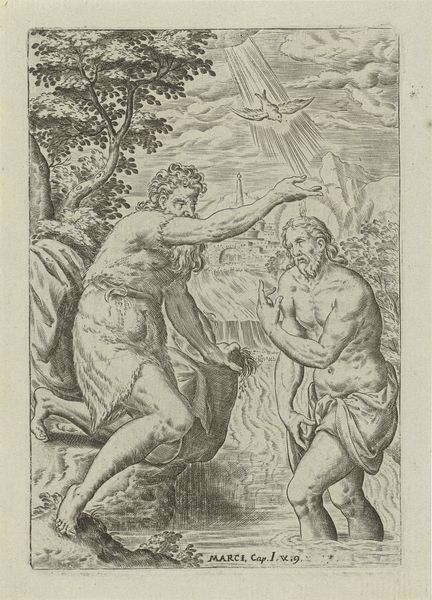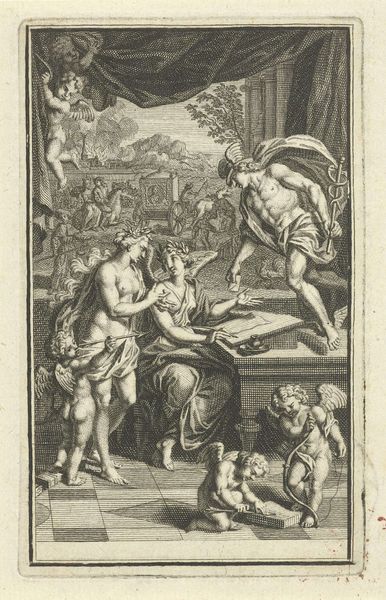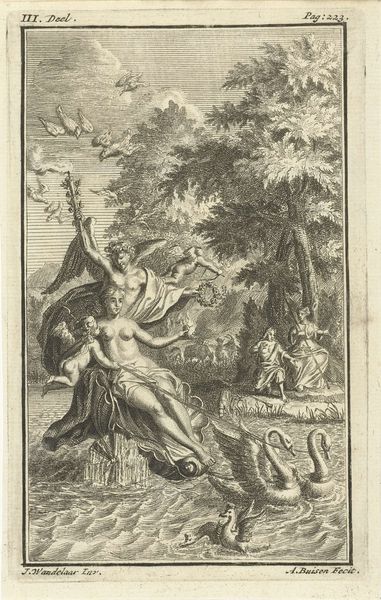
print, engraving
#
allegory
#
baroque
# print
#
old engraving style
#
figuration
#
history-painting
#
engraving
Dimensions: height 145 mm, width 95 mm
Copyright: Rijks Museum: Open Domain
Editor: This is "Amor met de Noorderster bij een vrouw," or "Cupid with the North Star near a woman," a 1686 engraving by Jan van Vianen. It's interesting how the artist combined mythological elements with what looks like a real-world landscape. What do you see in this piece that I might be missing? Curator: I see a complex layering of power dynamics embedded within this seemingly innocent image. Look at the composition: the woman is passively seated, her gaze directed upwards, while Cupid, armed with the tools of navigation and desire, actively presents something to her. Editor: That’s interesting. It makes me think about gender roles and power… Curator: Exactly. And consider the "North Star"—a symbol of guidance and constancy. Who controls the access to that guidance? The engraving suggests a very specific social order where knowledge and direction, even in matters of the heart, are mediated through male figures. Where does the female agency reside in the narrative that unfolds before us? Editor: I guess I was initially drawn to the sweetness of it, but I see now how that sweetness obscures a deeper commentary on social structure. Curator: Precisely. Van Vianen offers us a glimpse into the subtle yet pervasive ways that power operated in the 17th century, cloaked in allegory and classical imagery. What if the woman resisted? What narratives would be woven? Editor: So, it's less about simple love and more about how love itself can be a tool of control? Curator: In some ways, yes. Thinking about it intersectionally, we must ask: Whose love stories are told, and who gets to write them? Editor: This really encourages me to think about art with more of a historical, social, and, ultimately, political awareness. Thanks! Curator: Indeed, looking beyond the surface to excavate those underlying narratives is how art continues to speak to us across centuries.
Comments
No comments
Be the first to comment and join the conversation on the ultimate creative platform.
